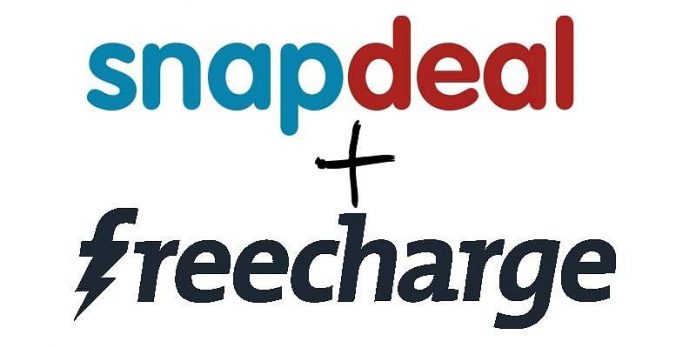
This article is written by M.S.Bushra Tungekar from the University of Mumbai Law Academy. In this article, the author discusses the acquisition of Freecharge by Snapdeal.
Table of Contents
Introduction
The e-commerce industry in India is a rapidly growing industry with a growth rate of 51% annually. The rapid growth of the market indicates that more and more Indians are getting used to the e-commerce industry and its convenience. Therefore, there is much room for growth and development. However, the competition in this industry is fierce with the industry being dominated by Flipkart, Amazon India, Zomato, Snapdeal, Swiggy, Nykaa, etc.
Over the years it has been seen that to grab a larger share of the market these e-commerce giants have acquired their competitors. A few of the recent acquisitions in the Indian e-commerce industry include Flipkart acquiring Myntra, PhonePe; Walmart acquiring Flipkart; Zomato acquiring Uber Eats and Snapdeal acquiring FreeCharge. In this article, we shall understand why Snapdeal acquired Freecharge, its strategies, and the effect of the acquisition.
Background
Snapdeal
- It is a New Delhi based online shopping portal which offers more than 60 million products spread across 800 categories ranging from national, regional, and international brands.
- Kunal Bahl along with Rohit Bansal founded Snapdeal in the year 2010.
- Snapdeal has grown to cater to over millions of users with the help of over 300,000 sellers delivering to 6000 plus cities across the nation.
- The main investors include SoftBank, BlackRock, Temasek, Foxconn, Alibaba, eBay Inc., Premji Invest, Intel Capital, Bessemer Venture Partners, Mr. Ratan Tata, among others.
- Over the years Snapdeal has taken over many companies such as Grabbon, eSportsbuy.com, eSportsbuy.com,Doozton.com, Exclusively.com, Freecharge, and few others as well.
Freecharge
- Freecharge founded in 2010 by Sandeep Tandon and Kunal Shah is an online payment portal that facilitates customers in recharging their mobiles, paying utility bills, DTH.
- Over the years Freecharge an e-wallet has grown from providing bill payment services to providing discounts and coupons.
- The amount paid by the user for any mobile recharge is given back to the customer in the form of coupons. It makes recharge virtually free.
- Coupons from brands and retailers such as Mcdonalds, Barista were initially available, slowly expanding to brands such as Domino’s Pizza, Cromā, Puma, Shoppers Stop.
- Freecharge claims to provide hassle-free, safe, and secure online transactions.
- The customers use the Freecharge wallet to pay across all major online platforms and offline stores like Shoppers Stop, McDonald’s, Cinepolis, HomeStop, Crosswords, Hypercity, and even for e-rickshaws, and many more.
The relation between Snapdeal and Freecharge
Snapdeal through a series of creative tweets on Twitter announced that it is acquiring Freecharge. The deal was worth 2,800 crores. The transaction took place in cash and stock both. The transaction took place in a 30 % cash and 70% stock deal.
The acquisition of Freecharge was one of the biggest acquisition deals in the startup domain of Indian e-commerce. This deal was closed within a month. The reason for the quick deal closure was that the companies had previously collaborated on various campaigns and due diligence of the companies was not an issue, trust played an important factor. Alok Goel (the then CEO of Freecharge) in an interview stated that there was not much negotiation of price. Snapdeal had proposed a fair price. This deal did not involve any investment bankers and was purely based on trust and friendship.
In 2015, Freecharge had raised 80 million dollars in the form of funding from its investors. It was a series C funding round. Hong Kong-based Tybourne Capital Management and San Francisco-based Valiant Capital Management along with Sequoia Capital, RuNet, and Sofina also participated in the funding round. The total amount of funding went up to 115 million dollars.
Reasons for the acquisition of Freecharge by Snapdeal
- Freecharge already had a wide and established customer base, acquisition of Freecharge would give Snapdeal access to those customers as well. Freecharge’s recharge customers were offered deals and were expected to become potential customers of Snapdeal.
- A huge chunk of Freechrage’s business comes from mobiles, the customers also have payment cards connected with their accounts. This meant that these customers would be likely to be drawn to becoming regular customers of Snapdeal.
- Snapdeal aimed at converting recharge customers into a regular buyer of goods. Most of the customers of Freecharge are young and belong to the age group of 15-25. Whereas, Snapdeals’s customer base was of the 25 onwards age group. There were a few speculations as to whether the customer base of Freecharge would be financially capable of purchasing goods in the higher price range. With this deal, Snapdeal positioned itself as the third biggest e-commerce portal.
The rationale behind Snapdeal choosing Freecharge
In an interview with CNBC-TV18, Snapdeal founder Kunal Bahl said that Freecharge’s platform for processing prepaid or postpaid recharges and payment of utility bills, attracted him to Freecharge. Freecharge was then the largest standalone platform providing these services to its customers, in India. Approximately 2- 3 million recharges done in India, were done online.
Funding
Freecharge over the years received a series of funding from investors such as Sequoia Capital, RuNet, Valiant Capital Partners, Sofina, and others. overall Freecharge was able to raise around $117 million from the fundings. Freecharge was one of the leading e-transaction companies in India back then.
Growth and customer loyalty
Freecharge had initially started as a platform facilitating online prepaid recharges and payment of DTH, electricity bills, gas bills, etc. Further in 2012, they expanded their services to provide discount coupons equivalent to the amount of recharge done by a customer. Discount coupons given by Freecharge could be redeemed at famous retail and online stores.
The expansion in terms of the couponing started generating 10,000 transactions per day for Freecharge. Not only that, to increase the coupon redemption arena the brand tied up with various other e-commerce companies such as Myntra, and Jabong. The company’s growth further increased as the company launched an app for the transactions and in the year 2016, the company claimed a 99% payment success rate along with an estimated 10-seconds payment time. Freecharge also vouched for its customer loyalty. Freecharge had around 70% customer loyalty rate not only that around 5% of the customers were recurring users up to 5 times a month.
Operations after the acquisition
After the acquisition, Snapdeal became the largest mobile e-commerce company in India.
Snapdeal and Freecharge functioned independently. All 200 of Freecharge’s employees were retained in the company. Alok Goel also said that the employees were always informed about the progress of the acquisition so that there was no panic amongst them.
It puts the company in direct competition with e-commerce portals such as Amazon India and Flipkart. Both the companies (combined) had over 1 million transactions daily. The companies collaborated smoothly to this deal and proved to be an important deal for its investors. Sequoia Capital, one of the most active early-stage venture capital investors in India got a share in Snapdeal.
Soon after the Freecharge acquisition, Snapdeal acquired Unicommerce and GoJavas for $ 17 million dollars and $ 40 million dollars respectively. It rigorously started to build its e-commerce system. For the Integration and management of so many teams, Snapdeal hired experts who did not come cheap.
However, on the other hand, the Snapdeal business was not doing very well in the year 2016. Customers complained about the services. Managing and handling so many parts was becoming a task for Snapdeal.
Aftermath of the deal
After the acquisition by Snapdeal, Freecharge reported almost one million transactions per day. Freecharge’s market share had also increased giving Paytm, it’s rival, tough competition.
The highlights of the development of Freecharge after the acquisition:
- Immediately after being acquired, Freecharge in partnership with YES Bank launched its own digital wallet. Taking a dig at its rival, Flipkart and Paytm. The Freecharge digital wallet allowed its customers to make transactions on both the e-commerce portals.
- In the year 2017, Freecharge witnessed growth in transactions by 15% on a monthly basis.
- Freecharge launched its “On the Go pin” technology. On the go pin was an innovative feature with an aim to enable offline payments at the stores. On the go pin allowed the customers to make payments without the use of the internet or any atm pins. To carry out transactions using the on the go, customers needed a four-digit pin which was given in the Freecharge digital wallet app itself and the customer’s phone number.
- To make virtual shopping easier for the customers, the company introduced the “Freecharge Go Mastercard”.
- To reach the unorganized retail store sector, Freecharge started a “chat and pay service”, wherein the customers and merchants could chat and conduct transactions. The seller or merchants only have to register on the app using their mobile phone number.
Selling Freecharge to AXIS Bank
The amalgamation of Snapdeal and Freecharge didn’t last very long. In the year 2017, as a part of Snapdeal 2.0, with a strong will, decided to sell Freecharge to Axis Bank. With the failure of the merger deal between Snapdeal and Flipkart, Snapdeal was in need of capital to keep the business going, at least until things got better in business. Due to its depleting cash reserves Snapdeal’s parent company, Jasper InfoTech made the decision to sell off Freecharge to Axis Bank for 385 crores.
With the capital raised from the Freecharge sale, Snapdeal was able to sustain and launch Snapdeal 2.0 in the market. The sale of Freecharge to Axis Bank was not a very profitable deal for Snapdeal but it was needed for its survival. Snapdeal had purchased Freecharge at $400 million and had sold it for only $60 million which is at a discount of almost 90%.
Reasons for the slip of Snapdeal’s market share
In spite of rigorous acquisition, Snapdeal’s market share dipped to 4% in the year 2017. Snapdeal acquired companies that were at its peaks. The contributing factor to its downfall was no differentiation.
Snapdeal failed to stand out in the crowd in any part of the business. Snapdeal was not excelling in any of the categories. Whereas, its competitors focused on specific categories and were exploiting those categories to most of their advantage. Amazon India and Flipkart’s one of the focused areas was the sale of mobile phones. They were having special mobile launches and deals. On the other hand, Snapdeal had no such tie-ups or launches.
Snapdeal could neither set a firm foot in the fashion industry products, it was unable to offer the variety and the kind of products that were being offered by Amazon India and Flipkart and its subsidiaries Myntra and Jabong.
Snapdeal at present
After the failure of the merger with Flipkart, which led to the sale of Freecharge, Snapdeal was in a state of chaos. However, Snapdeal turned around its fate with the launch of Snapdeal 2.0. Snapdeal team focused only on their core business, they realized it was best to move away from having multiple businesses all at once. They fixed their expenses and cost. They went over each and every process with a fine-tooth comb to reduce the cost. Cost optimization was one of their goals which helped them rebuild their brand.
Freecharge sale played a very important part in rebuilding Snapdeal as, without the payment from the sale, Snapdeal would have not survived. They strengthened the tea by improving the culture. Slowly by 2018, Snapdeal started to stabilize with a slow yet steady increase in sales. In July 2018, Snapdeal had twice the amount of orders on a monthly basis. They had also doubled their revenues along with cost optimization and reduction in cash burns. Snapdeal’s CEO Kunal Bhal tweeted that the company had recorded the highest number of monthly transactions in the history of the company. The company added over 60 thousand sellers. During 2019, Diwali, Snapdeal posted a growth of 52% and also claimed that the majority of orders were from non-metro cities and towns across India. Snapdeal has rejuvenated from its deathbed. It went from having no money to being in control and in the game once again.
Conclusion
Freecharge definitely has an eventful success story. Freecharge had gained a huge share in the Indian market by the way of mobile recharges. Freecharge raised millions of dollars through investors in various funding rounds. It was acquired by Snapdeal for $ 400 -$ 450 USD. It was hands down the largest M&A deal to take place in the Indian startup ecosystem. However, Snapdeal due to unfortunate circumstances had to sell Freecharge to Axis bank in 2017.
References
- https://www.ibef.org/industry/ecommerce.aspx#:~:text=India’s%20E%2Dcommerce%20revenue%20is,the%20highest%20in%20the%20world.
- https://www.snapdeal.com/page/about-us
- https://www.freecharge.in/aboutus
- https://www.vccircle.com/the-fall-and-fall-of-snapdeal-why-its-market-share-slipped-from-26-to-4
- https://www.linkedin.com/pulse/so-how-things-now-snapdeal-kunal-bahl/
LawSikho has created a telegram group for exchanging legal knowledge, referrals and various opportunities. You can click on this link and join:












